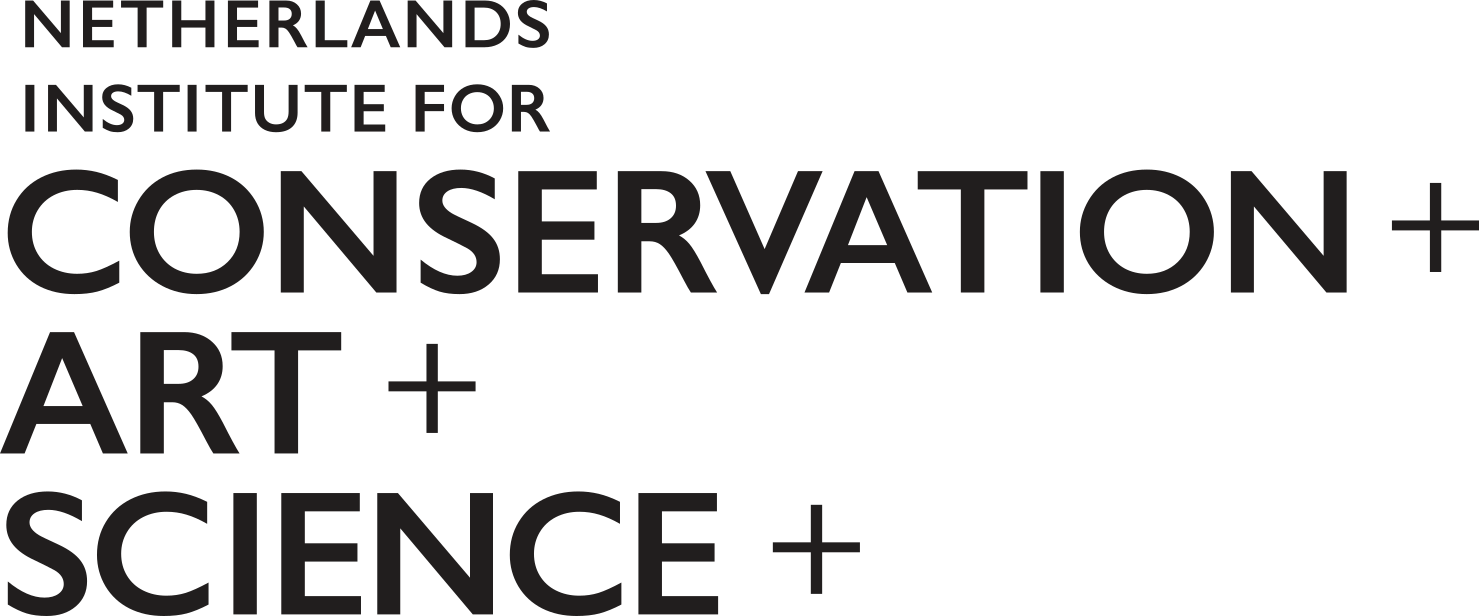Media
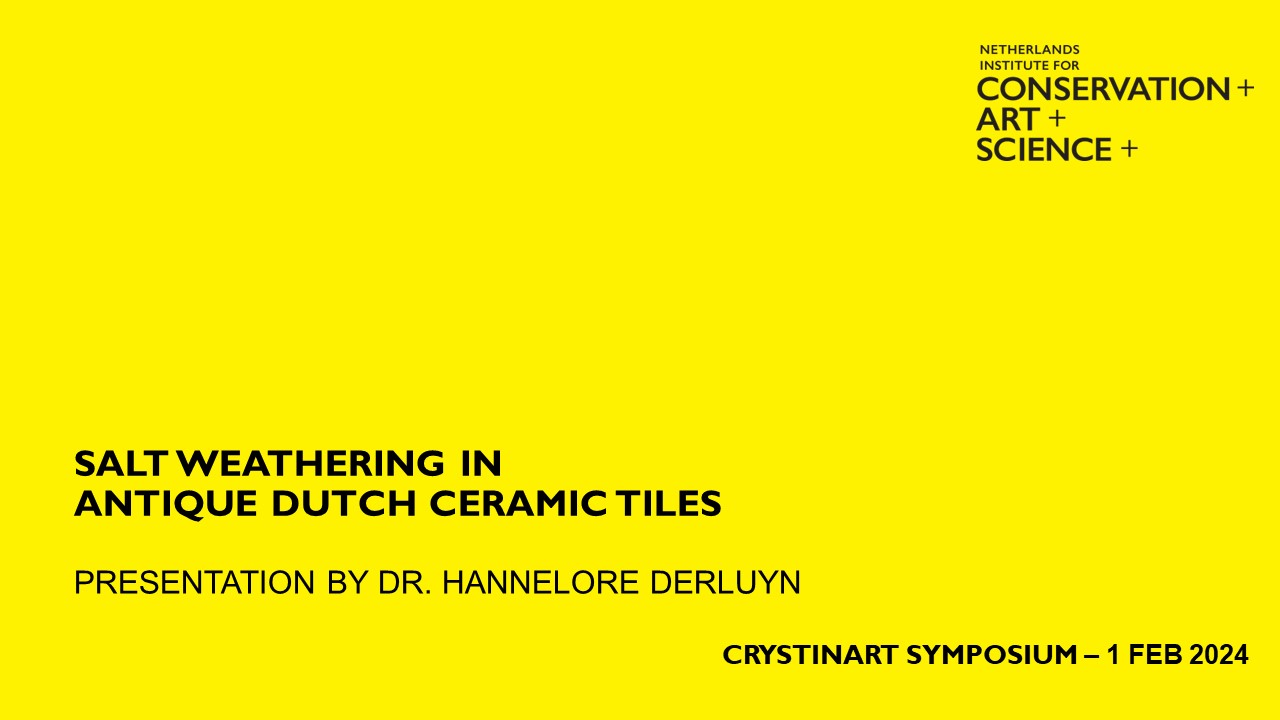
CRYSTINART Symposium
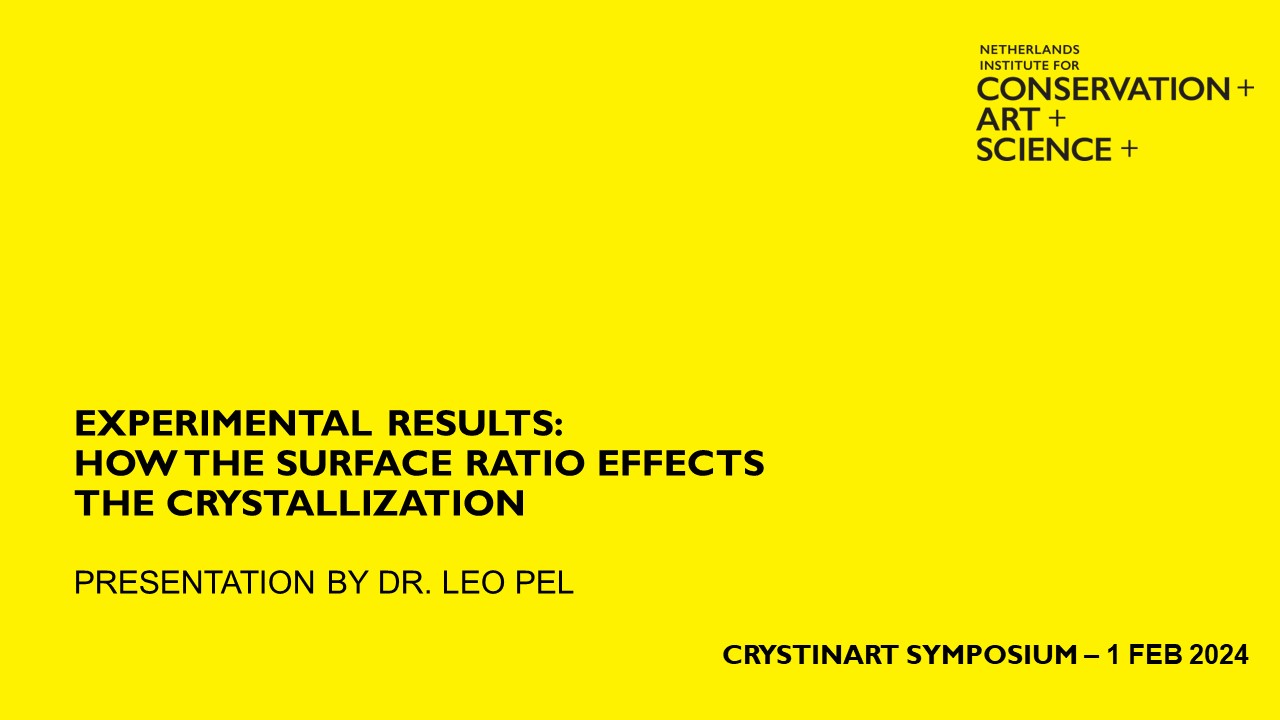
CRYSTINART Symposium

CRYSTINART Symposium
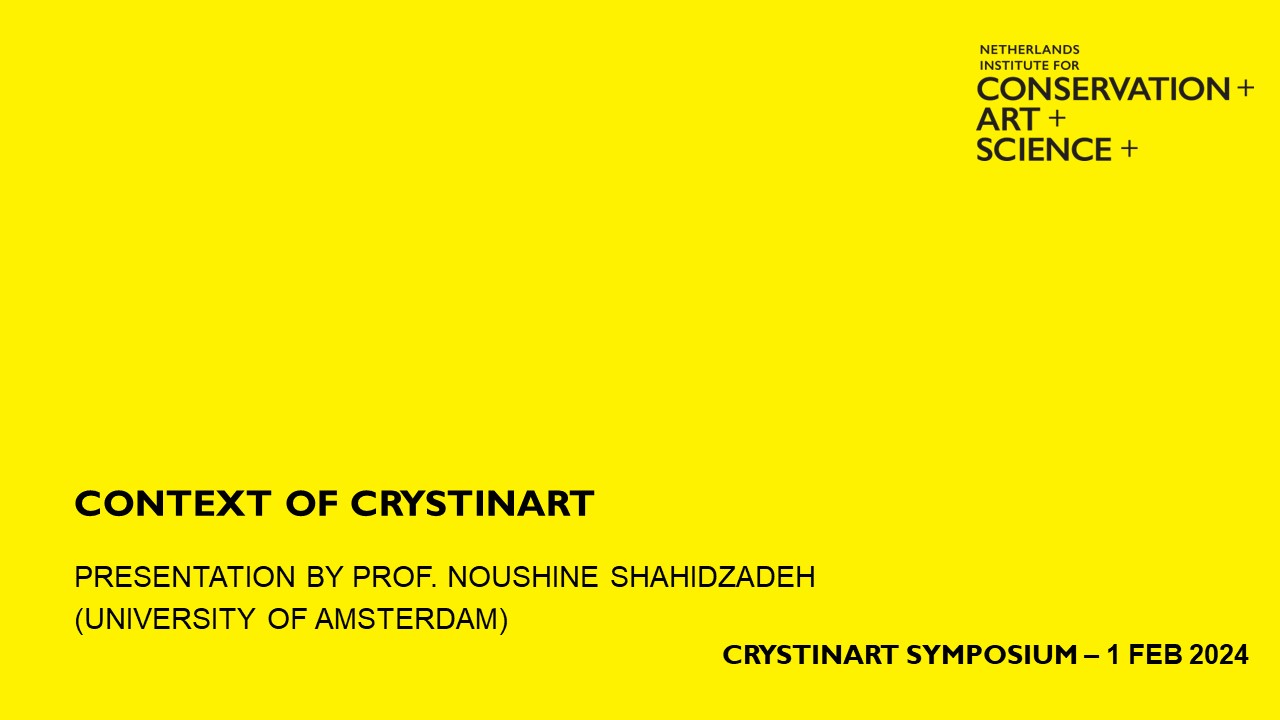
CRYSTINART Symposium
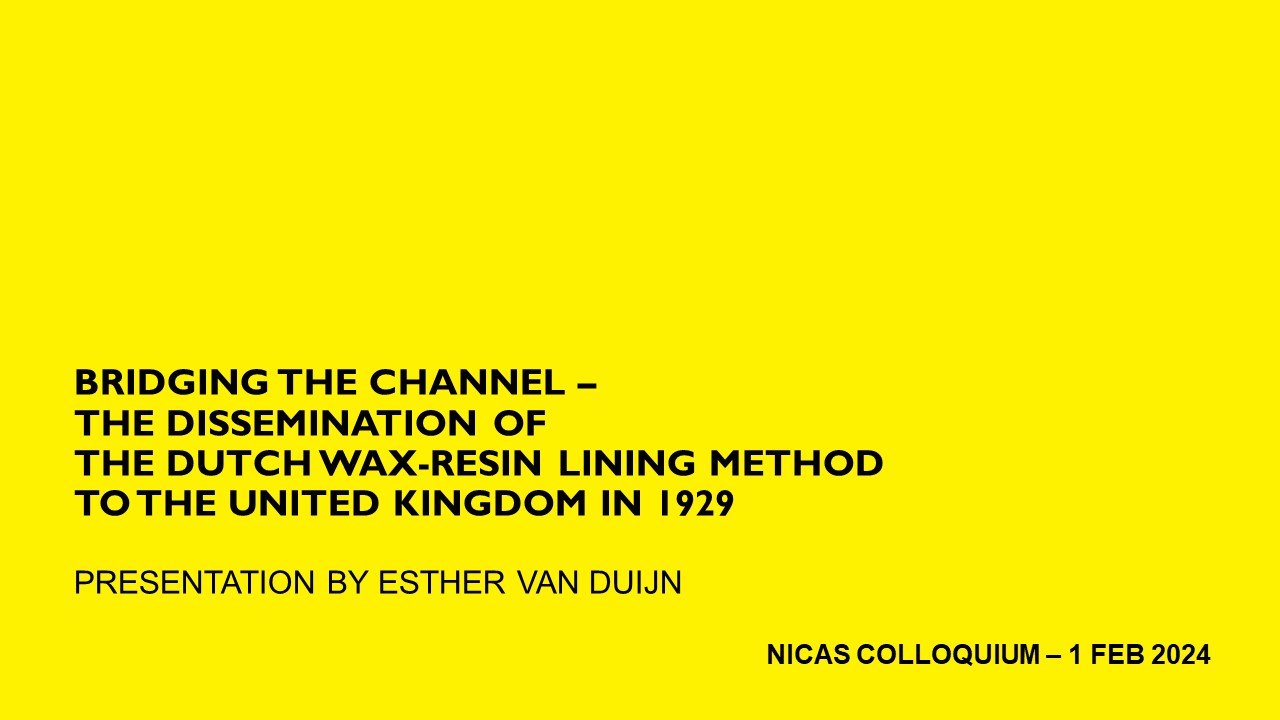
NICAS Colloquium
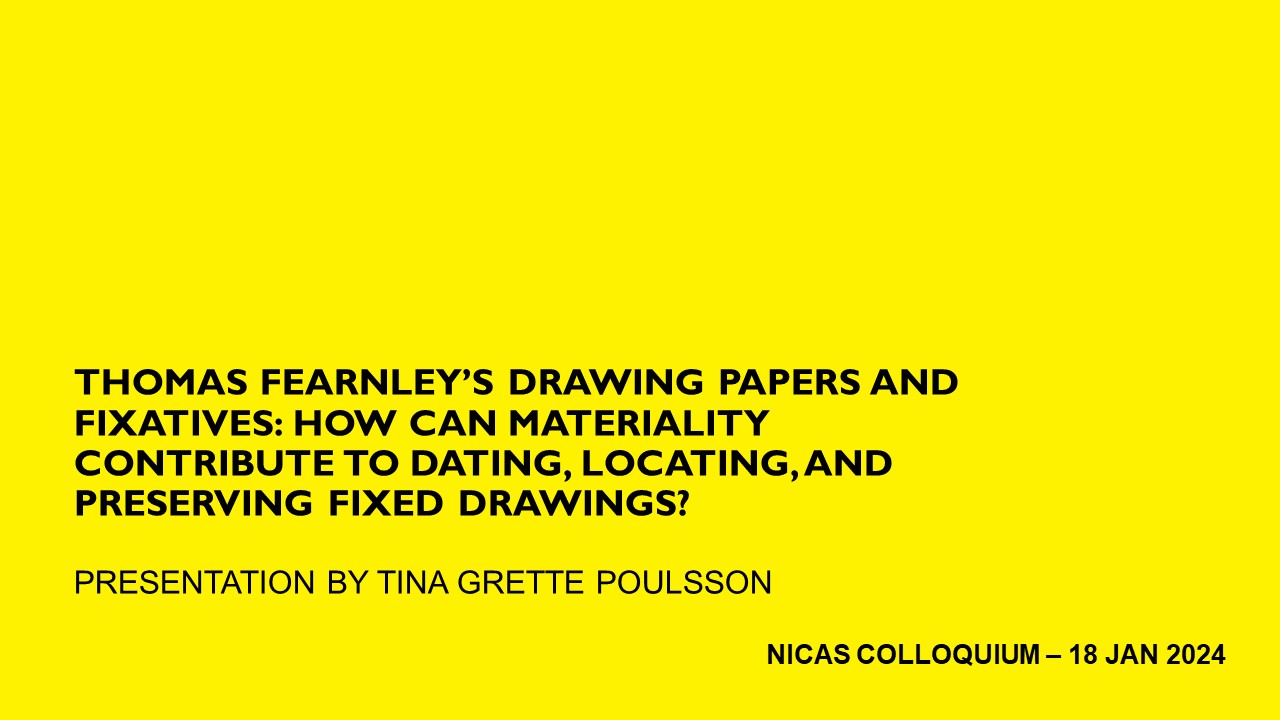
NICAS Colloquium
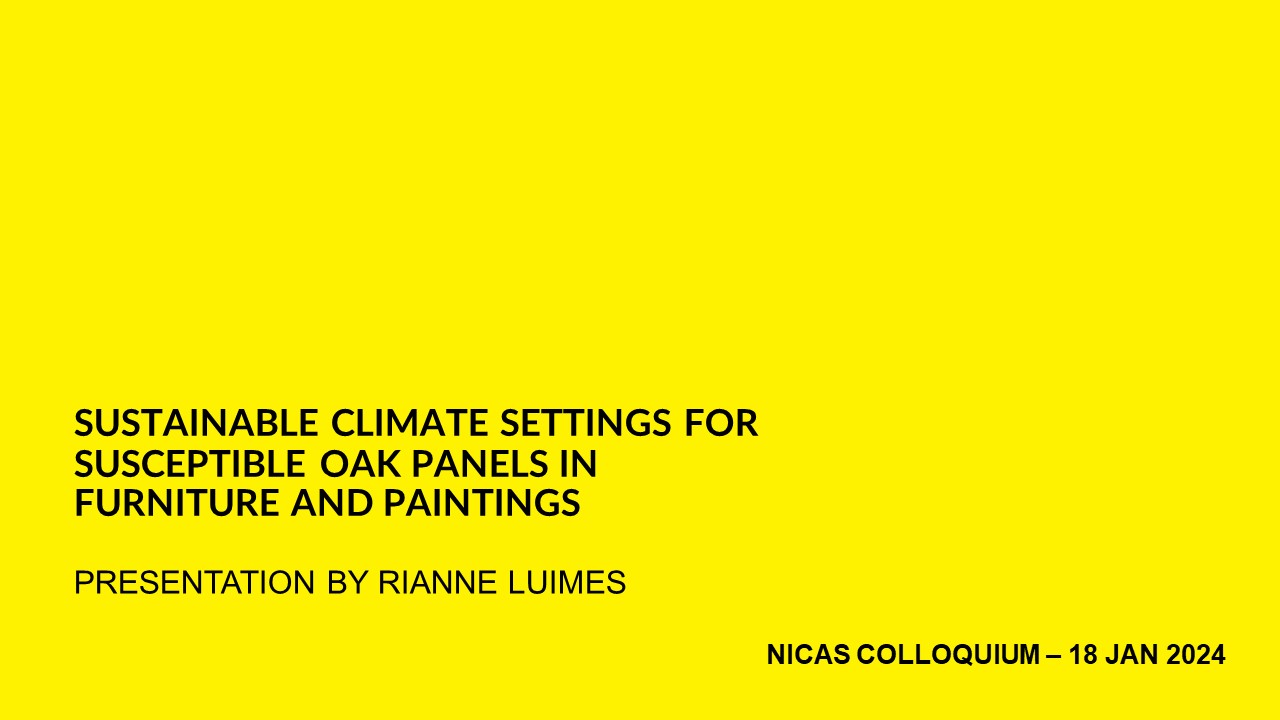
NICAS Colloquium
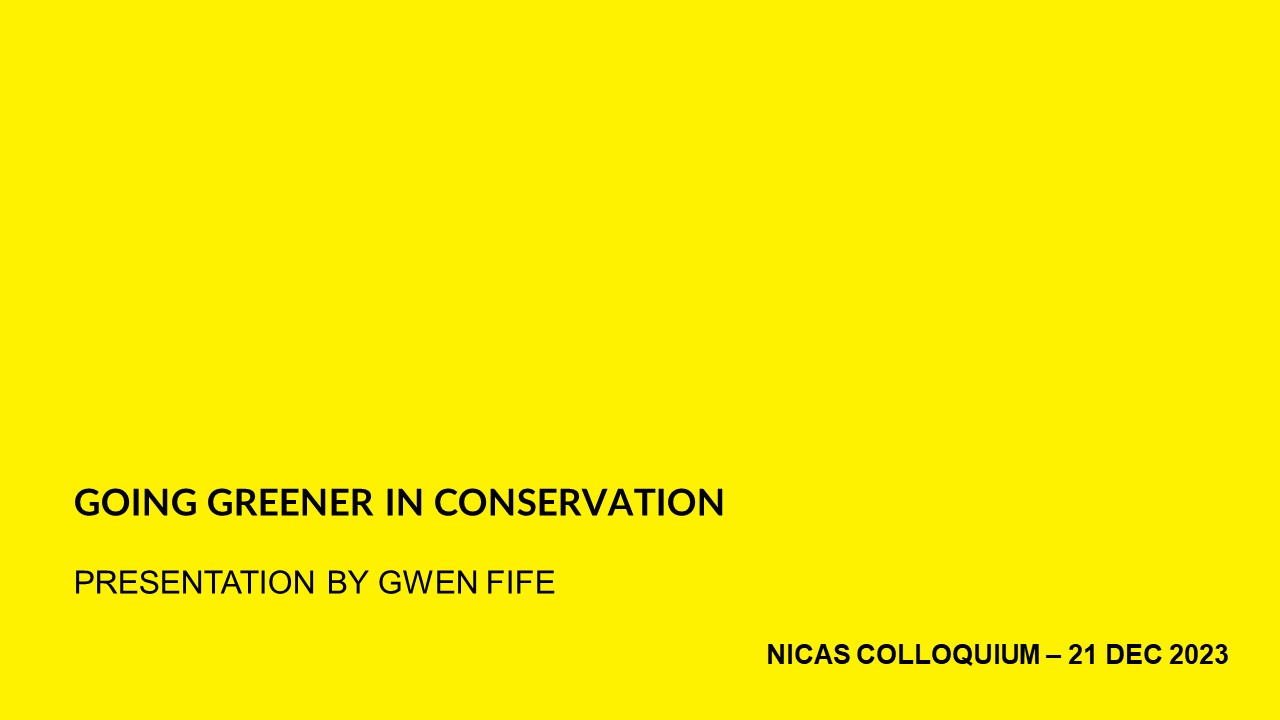
NICAS Colloquium
-
CRYSTINART Symposium
-
CRYSTINART Symposium
-
CRYSTINART Symposium
Case Studies from the Rijksmuseum - by Isabelle Garachon -
CRYSTINART Symposium
-
NICAS Colloquium
Esther van Duijn (Rijksmuseum) - Bridging the Channel – The Dissemination of the Dutch Wax-Resin Lining Method to the United Kingdom in 1929 Co-authors: Michiel Franken (formerly RKD) and Mireille te Marvelde (Frans Hals Museum) Abstract: In April 1929, a delegation of several British museum specialists visited the restoration studio of the De Wild family in The Hague and of the Rijksmuseum in Amsterdam, for demonstrations on wax-resin lining, also known as ‘The Dutch Method’. The visit seems to have been a catalyst for the dissemination of the technique into the UK and consequently its appearance in the international literature, its intensive further investigation and following debate. Studying this exchange answers not only questions about the dissemination, but also about the international contacts between museum directors, curators, scientists and restorers. The visit sheds light on important international developments in conservation history, on the eve of the 1930 Rome conference, the subsequent foundation of several European museum laboratories and a general forward progression in the field of conservation. This lecture was previously presented for the symposium ‘Bridging the gap: synergies between art history and conservation’, at the National Museum of Norway, Oslo, on 23 November 2023. Bio: Esther van Duijn is paintings conservator at the Rijksmuseum since 2014. Between 2003 and 2014 she worked for various Dutch museums and institutions as conservator and/or researcher. In 2013 she defended her PhD on the painting technique of gold-brocaded velvets in early Netherlands paintings. During her career she has specialized in the history of conservation, focusing since 2014 on the paintings collection of the Rijksmuseum, on which subject she has published extensively. She is currently part of Operation Night Watch. -
NICAS Colloquium
Tina Grette Poulsson – Thomas Fearnley’s drawing papers and fixatives: How can materiality contribute to dating, locating, and preserving fixed drawings? Abstract: The romantic artist Thomas Fearnley (1802-42) made many drawings with graphite pencil onto which he often applied a fixative. The fixative appears different depending on the paper is has been applied to; on some drawings the fixative has discoloured, on others it seems to have protected the paper underneath from discolouring. The PhD project builds on previous research, carried out jointly by the National Museum and the RCE (2013-2016), that identified the fixative in two of Fearnley’s drawings (1832) as milk. Fearnley’s drawing papers are being examined and classified, and a selection of drawings will be further analysed to identify fixative(s) used in different periods and locations. Based on the analysis, the aim is to investigate further the possible reasons for the different appearance of the fixative(s), as well as how best to preserve this collection of drawings. Bio: Tina Grette Poulsson is a paper conservator at the National Museum of Norway and currently in her first year as an external PhD candidate at the UvA. She studied art history at the University of Oslo (1995-1997), holds a BA in paper conservation (2000) from Camberwell College of Arts, London, and an MA in paper conservation (2004) from the National Gallery, Norway, and University of Oslo. The MA was published by Archetype in 2008, entitled “Retouching of art on paper”, later translated to Japanese. She worked as a paper conservator at the Museum Conservation Services in Cambridge from 2004-2006. -
NICAS Colloquium
Rianne Luimes – Sustainable climate settings for susceptible oak panels in furniture and paintings Abstract: Multi-disciplinary research is carried out to study the effects of climate fluctuations on oak panels in furniture and paintings. For this purpose, the structural response of two cabinets attributed to Jan van Mekeren and two panel paintings in the collections of the Rijksmuseum and Castle Amerongen are investigated. While these objects have nearly identical characteristics, they are exposed to completely different indoor climate conditions. A strict, highly controlled indoor climate at the Rijksmuseum is maintained. On the contrary, a fluctuating, slightly controlled indoor climate exists at Castle Amerongen. By means of dedicated in-situ monitoring of these objects during one calendar year and advanced computer modelling, the climate-induced structural changes of the objects are analyzed in detail. This allows to draw conclusions on a possible relaxation of indoor museum climate specifications and thereby help the Rijksmuseum, as well as the wider museum community, to achieve a more sustainable climate policy. Bio: Rianne Luimes obtained her MSc degree in Structural Design (2011) and PhD degree in Applied Mechanics (2014-2019) at the Eindhoven University of Technology. Her PhD research focused on climate-induced damage in oak museum objects. From 2018 until 2022 she worked as a postdoctoral researcher on the condition assessment of concrete sewer pipes. Since November 2022 she is a scientific researcher at the Rijksmuseum Amsterdam and Eindhoven University of Technology analyzing the response of oak museum objects under climate fluctuations with the aim to derive sustainable climate specifications for museums. -
NICAS Colloquium
Gwen Fife - Going Greener in Conservation Abstract: This talk will highlight some work being done into how greener conservation approaches in practice can be assessed, defined and applied. We’ll look at a brief history of the meaning of ‘green’, from its origins in Green Chemistry in the 1990’s and evolution within the developed sustainability frameworks, to examining what greener means in the context of cultural heritage conservation. The various and varying demands of our professional work must be appropriately considered in this, and research from two projects will highlight some approaches and findings from this perspective. Starting with the specific topic of greener solvents for conservation - assessment methods, research and information dissemination - we’ll then look at the strategies for providing a holistic definition of green conservation for the field as a whole, and elucidating the associated parameters. Bio: Gwendoline R. Fife is an art conservation consultant working as researcher for the Rijksmuseum and Ki Culture on GOGREEN (Horizon Europe). With a background in chemistry and paintings conservation she has worked for over 25 years in museums and institutions. Regularly publishing her research, she has been providing international lectures and workshops on sustainable solvent approaches in conservation practice since 2009. She is also the Director of Sustainability in Conservation’s Greener Solvent Project.
